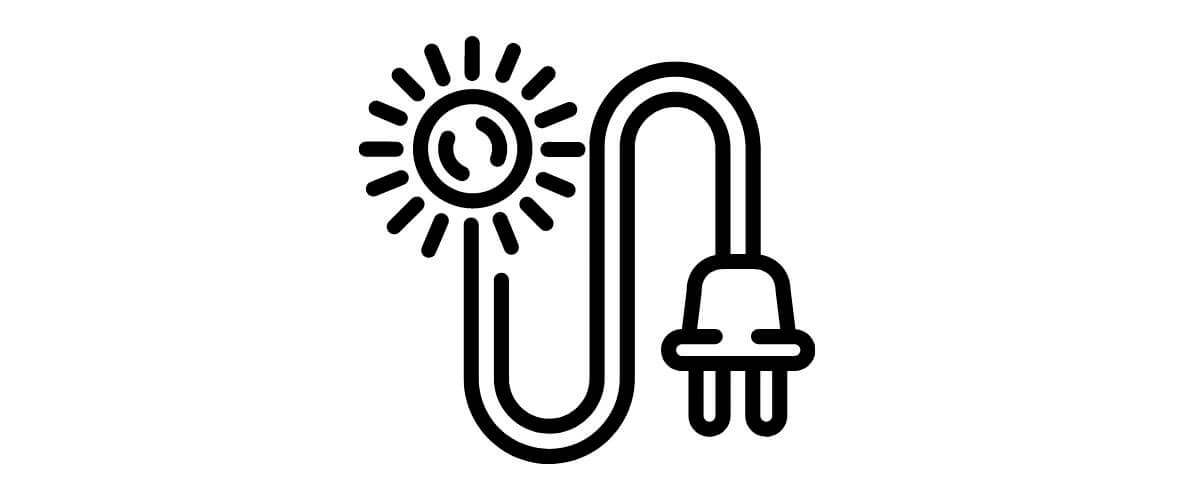
As solar power is becoming the standard for renewable energy efficiency, more folks are researching which options best generate solar power. Currently, the solar industry offers two types of technologies for solar power: Photovoltaic (PV) and Concentrated Solar Power (CSP).
Here, we will be comparing Photovoltaic and Concentrated Solar Power technology systems. Concentrated Solar Power is not as prominent in the energy market, but this system offers solutions as well.
Each technological option offers advantages and disadvantages, which we’re going to discuss further in this guide.
Curious about which type of solar energy technology reigns supreme? Let’s find out.
Photovoltaic and Concentrated Solar Power Technologies
Using direct sunlight, Photovoltaic solar panels produce electricity via special cells, a method known as the photovoltaic effect. In addition, PV converts direct sunlight into an alternating current.
Concentrated Solar Power, on the other hand, is vastly different from PV. CSP distributes electricity through a power network. This system also converts the sun’s direct heat into electricity, rather than converting it from direct sunlight.
Seems a little confusing, right? Don’t worry, we’ll break it down for you.
Advantages of Photovoltaic and Concentrated Solar Power
CSP systems are thermal-based, storing efficient amounts of energy without needing direct sunlight. In other words, this type of system generates electricity best when there is not a cloud in the sky while storing plenty of thermal energy.
Although PV panels do not store thermal energy or need thermal energy to thrive, they generate high bouts of electricity directly through sunlight.
Disadvantages of Photovoltaic and Concentrated Solar Power
Because of CSP’s thermal energy storage technologies, it can achieve more energy compared to PV.
However, PV requires ample electricity to perform at a higher output. Unfortunately, most power sources cannot handle conducting high levels of electricity.
Energy Storage
So, which system is capable of storing more energy?
Rather than needing the sun’s heat to produce more power, PV needs direct sunlight to store and generate electricity. But unlike CSP, the PV system is incapable of storing thermal energy because it stores electricity.
Storing electricity in a PV system is not feasible. Therefore, CSP’s thermal energy storage is superior to that of PV, making it the ideal solution for large projects that require excess energy and a strong power network to function.
Additionally, CSP can operate during unpredictable conditions, which is crucial.
What Energy Markets Should Consider
When choosing an efficient power source, energy markets must look at power systems through the lens of:
- Generally, how much will energy cost with this power source?
- Can this type of power source support this particular industry or facility efficiently?
- How much power can this source generate?
PV is more cost-effective than CSP, but is it better? Truthfully, many investors are opting for PV because of the cost. PV prices are actively decreasing and show no signs of stopping anytime soon.
In addition, PV panels are easier to assemble.
CSP could thrive in the energy market if it costs less, becomes less risky to use, and becomes easier to build. Possible risks with CSP include hefty costs and complex thermal energy storage.
Arguably, the cost of energy lets most investors determine their preferred power source.
The Importance of Solar Energy Integration
The differences between CSP and PV systems are so different that they may not be worth comparing after all. Many believe that for the solar power industry to excel, the two systems will become one at some point.
So, does that mean no more competition? Well, yes, it is certainly possible.
CSP’s thermal energy storage has the potential to merge with PV turbines, which means that both technologies may end up needing each other after all. A CSP system and its thermal energy storage thrive in unstable climate conditions, generating power when PV otherwise cannot.
Therefore, these technology systems can integrate the positive effects of solar energy into the power industry.
Concentrated Solar Power vs. Natural Gas
Rather than competing against PV technology, CSP is working against natural gas, thermal technologies, and other thermal-based energy sources.
CSP needs thermal energy and the sun’s heat to generate power. Because of that, natural gas is considered a major competitor over PV.
Similar to CSP, natural gas produces efficient power through processing plants. In addition, both forms are dispatchable.
Currently, natural gas is more cost-effective than CSP. Unfortunately, there are plenty of downsides to using natural gas as a primary energy source, including:
- Natural gas is harmful to the environment, leaking methane and putting lives at risk.
- Although it is affordable now, the cost of natural gas could increase exponentially. If natural gas becomes scarce over time, we will see prices go up.
- Although natural gas is dispatchable, it is not necessarily a safer option than CSP.
Natural gas may seem like a premium option at first, but we should still consider all the potential dangers behind it.
Closing
Now that we understand more about the only technology systems currently in the solar power industry, CSP and PV, we can recognize that they are not necessarily alike. Yes, both systems use aspects of the sun to produce power, but one uses heat, and the other uses light.
Let’s review the two technologies, shall we?
CSP converts energy from the sun’s heat to generate power, whereas PV absorbs direct sunlight through the photovoltaic effect to conduct an electric current.
One of these technologies is not better than the other, per se. For one, CSP uses premium thermal energy storage to produce electricity more efficiently.
However, PV does not store thermal energy at all. Instead, it struggles to generate electricity without direct sunlight or sufficient battery storage.
Interestingly, many investors still opt to use PV over CSP as a power source because PV is more cost-effective and easier to build. Unfortunately, the fact that PV is much cheaper than CSP negates the fact that CSP is another viable option.
Ultimately, CSP and PV are not in direct competition with one another. CSP competes with natural gas but is fighting to stay relevant in the energy market against natural gas and PV. Also, low energy costs are more attractive to investors, which is perhaps why CSP struggles more than other energy sources.
Let’s not look at CSP and PV as competing technology systems. Rather, let’s try to see both options as beneficial to the energy market.
Hopefully, one day we may begin to recognize CSP for its significant contribution to solar power. It should not matter that CSP is more expensive than another option because we know it has the power to work in tandem with PV.
With CSP’s efficient thermal energy storage and energy saving, it should become a direct complement to the power of PV. Together, both technologies will continue to make solar power a dominating force in sustainable energy.
Work With OnePointe Solutions
If your facility works in generating technologies to produce these kinds of solar power, at OnePointe Solutions, we can design custom laboratory layouts, industrial workbenches and provide lab-grade countertops that won’t affect the quality of your work in your facility.
We are your one-stop shop for high-quality laboratory, industrial, and commercial furniture. Our team of experienced professionals manufactures custom workstations to meet your design preferences.
We make sure to provide the right amount of quality and versatility your space needs to thrive.
If you are interested in working with the OnePointe Solutions team, get in touch with us and schedule a free virtual consultation by calling (866) 612-7312.


